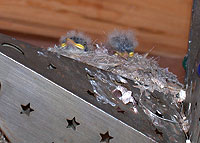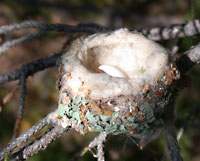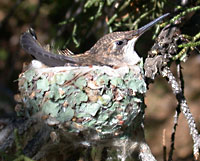Check out
Michael's
Gila Nature Blog
List of Birds Seen on
Casita Lands and Along Bear Creek |
Birding at Casitas de Gila …
At Casitas de Gila Guesthouses and our Bear Creek Nature Preserve,
Birding Enthusiasts who book their New Mexico Getaway with us will find:
-
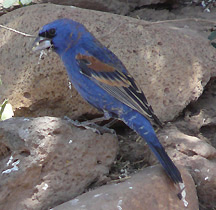 265 private, secluded, quiet, and tranquil acres of diverse landscape and wildlife habitat where the dominant sounds are those of Nature: the ever-present calls of the many birds that reside or visit here, the murmur of water flowing over the rocks in the Bear Creek canyon 80 feet below the Casitas, and the rustling of wind in the Junipers, Willows, Cottonwoods, and Sycamores. Truly, it is so quiet here that one can actually hear the flapping of the wings of a Raven as it passes overhead. 265 private, secluded, quiet, and tranquil acres of diverse landscape and wildlife habitat where the dominant sounds are those of Nature: the ever-present calls of the many birds that reside or visit here, the murmur of water flowing over the rocks in the Bear Creek canyon 80 feet below the Casitas, and the rustling of wind in the Junipers, Willows, Cottonwoods, and Sycamores. Truly, it is so quiet here that one can actually hear the flapping of the wings of a Raven as it passes overhead.
The centerpiece of the Casitas's Bear Creek Nature Preserve, and the primary draw for the abundance and diversity of birds and other wildlife that are found here, is, of course, Bear Creek, a 25-mile long, year-round, free-flowing major tributary of the Gila River. Along its three-quarter-mile passage through Casitas de Gila lands, Bear Creek is bordered by a diverse landscape consisting of rocky cliffs, rolling upland hills, ancient river terrace flats, and adjacent rugged mountains.
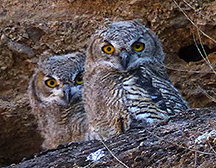 Together these diverse landscape elements combine to create 4 distinct birding habitats on our 265 acres: Together these diverse landscape elements combine to create 4 distinct birding habitats on our 265 acres:
— the Bear Creek Deciduous Riparian Habitat
— the High Chihuahuan Desert Habitat
— the Juniper and Oak Habitat
— the Mountain Grassland Habitat
Our Trail Guide & Map (.pdf file) makes each of these habitats readily accessible to guests at Casita de Gila Guesthouses. The Guide includes 15 marked and maintained trails, providing over 7 miles of hiking, exploration, and connection to Nature right here on our property.
-
a year-round diversity of breeding, resident, and transient bird populations currently numbering some 143 recorded species. We have been actively feeding birds since we opened in 1999. During every season, there are many varieties of birds just outside the door to your Casita and along our trails, waiting for you to find, photograph, and enjoy.
-
our abundant Hummingbird population, providing our guests with hours of avian entertainment during the Spring, Summer, and Fall. By mid-August, they are swarming around the feeder on the porch of your Casita. We'll gladly keep you stocked with fresh hummingbird nectar so you can keep them happy and well fed.
-
a variable-power spotting scope in your Casita, that you are welcome to use on our property while you are here. Loaner binoculars are available,too, in case you forgot to bring yours. You'll be amazed at the number of birds and other wildlife you can observe right from your porch after scattering some of the bird seed you'll find stored under your porch bench. During cooler months, the suet feeder in a nearby Juniper tree is fun to watch, too.
-
a library of books, guidebooks, maps, and information on birding and the best local, nearby birding locations in the bookcase in your Casita. While you are a guest at Casitas de Gila, we're happy to answer any questions you may have regarding the best locations for birding away from the Casitas.
Call us to book your stay Casitas de Gila Guesthouses
and start mapping out your path to New Mexico birding paradise!
Birding Opportunities and Localities Near Casitas de Gila
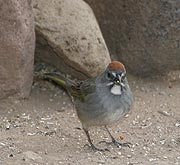 The most recent sources of data report the number of bird species existing in the Lower 48 U.S. States as between 956 and 993. The number of species reported for New Mexico as of August 25, 2017, by the New Mexico Bird Records Committee is 544 species, or about half of the birds seen in the Lower 48 States. Grant County, the county in which Casitas de Gila is located, has a reported bird species number of around 340 species, or 62% of the birds that can be seen in New Mexico, and a very impressive 35% of all the birds in the lower 48 states! The most recent sources of data report the number of bird species existing in the Lower 48 U.S. States as between 956 and 993. The number of species reported for New Mexico as of August 25, 2017, by the New Mexico Bird Records Committee is 544 species, or about half of the birds seen in the Lower 48 States. Grant County, the county in which Casitas de Gila is located, has a reported bird species number of around 340 species, or 62% of the birds that can be seen in New Mexico, and a very impressive 35% of all the birds in the lower 48 states!
The large diversity and number of bird species found in Grant County can be attributed to several factors, including:
- an extreme range in topographic elevation of just under 7,000 feet, rising from a 3,900 foot desert landscape along the Gila River a few miles west of the community of Redrock, to an alpine terrain of 10,788 feet on Mogollon Baldy Peak in the Mogollon Mountains of the Gila Wilderness, 4 miles north of the Grant County/ Catron County line
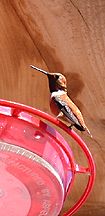 - the exceptional diversity of plant species and food sources accompanying this elevation change
- climatic factors, including seasonal temperature and precipitation variations that accompany the elevation change
- the presence of major significant bodies such as the Gila River and its larger tributaries of Bear Creek and Mangus Creek, plus man-made lakes such as Bill Evans Lake, and numerous marshy areas and ponds
- a very low density of human population and developed land area versus an exceptionally high percentage of totally undeveloped wilderness and near-pristine State, Federal, and other conservation-based land areas
- the location of Grant County within the Rocky Mountain leg of the Central Bird Migration Flyway.
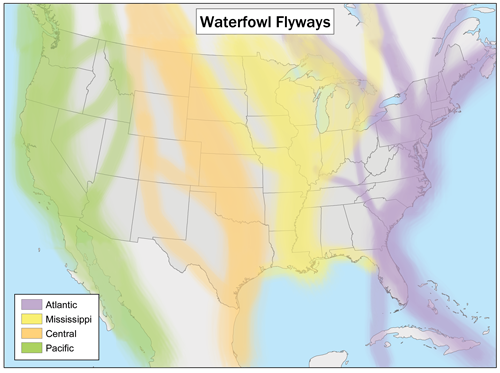
Habitat Diversity of Birding Areas Near Casitas de Gila
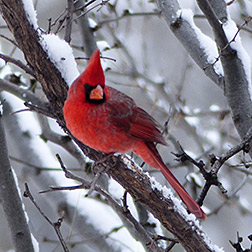 In nature, distinct groups or communities of birds and animals are found in areas which are characterized by specific combinations of environmental factors, such as topography, climate, vegetation, water bodies, etc. These different areas are referred to as habitats. In nature, distinct groups or communities of birds and animals are found in areas which are characterized by specific combinations of environmental factors, such as topography, climate, vegetation, water bodies, etc. These different areas are referred to as habitats.
Within a few miles of Casitas de Gila, 10 different bird habitats (.pdf file) are recognized over the thousands of acres of lands that are open to the public and easily accessed by Casita guests. Each of these habitats is characterized by its own unique community of different bird species.
As mentioned above, four of these habitats, Deciduous Riparian, High Chihuahuan Desert, Oak-Juniper, and Mountain Grassland, are represented on Casitas de Gila lands.
 The remaining six habitats are Oak Woodland, Pinyon Juniper, Ponderosa Pine, Spruce-Fir, Marsh-Open Water, and Coniferous Riparian. Most, if not all, of the 355 species of birds reported in Grant County can potentially be found somewhere within these 10 habitats at different times during the year. The big question of course is where, when, and how to get there! The remaining six habitats are Oak Woodland, Pinyon Juniper, Ponderosa Pine, Spruce-Fir, Marsh-Open Water, and Coniferous Riparian. Most, if not all, of the 355 species of birds reported in Grant County can potentially be found somewhere within these 10 habitats at different times during the year. The big question of course is where, when, and how to get there!
In this regard, your hosts at Casitas de Gila Guesthouses are always ready to help. With 20 years of on-site, nature-oriented experience and research in the area, we can direct you to the most promising and accessible birding locations during the time of your stay, and provide maps and directions that will ensure you will find these locations. If you are a novice or new to birding in the Southwest, we can recommend places where you should find the greatest number of species. If you are a long-term, experienced birder on the trail for specific species, we may be able to offer useful advice as well. And we are available by phone or e-mail to answer your questions or provide information prior to your arrival to help you better plan your stay.
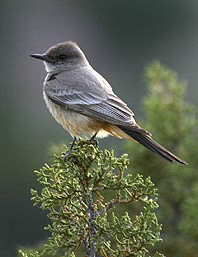 An abundance of birds, both in terms of numbers and species, can be found in our area year-round, even in Winter. Of course, the numbers and species will vary considerably with the season. An abundance of birds, both in terms of numbers and species, can be found in our area year-round, even in Winter. Of course, the numbers and species will vary considerably with the season.
Basically, there are 6 types of birds and times that birds are present to consider:
- Resident birds — resident year-round
- Summer Residents — present from Spring until Fall migration
- Summer Visitors — not known to breed in the area
- Winter Residents — present from October through March
- Transients or Migrants — during Spring and Fall migrations
- Visitants — birds who appear at various seasons on an irregular basis
The times of Spring and Fall migrations in Southern New Mexico will vary somewhat from year to year. Generally Spring Migration in our area is from early-to-mid March through mid-May; and Fall Migration is from early to mid-September through early November.
How Our WiFi Can Help You Identify Birds
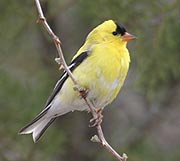 If you are traveling with your laptop, tablet, or smartphone, you can use the Internet to research information on, photographs of, and hear the call for each bird that you see while staying at Casitas de Gila Guesthouses. If you are traveling with your laptop, tablet, or smartphone, you can use the Internet to research information on, photographs of, and hear the call for each bird that you see while staying at Casitas de Gila Guesthouses.
There are several sites on the Web that make available an amazing amount of information on birds. One of the best sources for expanding your avian expertise is the Cornell Lab of Ornithology site All About Birds. This site will lead you to a literal world of information on birds.
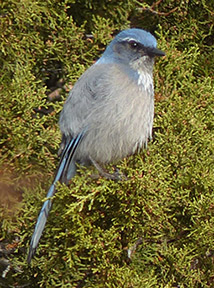 Let's say you're a novice or casual birder from the East Coast making your first trip to the Southwest. You're sitting on the porch of your Casita enjoying a cup of coffee or tea as the morning Sun starts to poke its head over North Peak, just across the Creek from you. You notice a rather large, sleek, blue, gray, and possibly some white, bird fly in and start pecking at the bird seed you scattered on the picnic table. The bird is very close, but with the Sun shining directly in your eyes, details are hard to see. It looks somewhat like the Bluejay you have at home, but it doesn't have a crest. Let's say you're a novice or casual birder from the East Coast making your first trip to the Southwest. You're sitting on the porch of your Casita enjoying a cup of coffee or tea as the morning Sun starts to poke its head over North Peak, just across the Creek from you. You notice a rather large, sleek, blue, gray, and possibly some white, bird fly in and start pecking at the bird seed you scattered on the picnic table. The bird is very close, but with the Sun shining directly in your eyes, details are hard to see. It looks somewhat like the Bluejay you have at home, but it doesn't have a crest.
So you thumb through the guidebook on western birds that you found in your Casita's bookcase and conclude that it must be some sort of Jay, either a Western Scrub Jay, Mexican Jay, or possibly a Pinon Jay, before the bird decides it doesn't want to have breakfast with you watching and retreats into a juniper a few feet away, half-hidden in the foliage, and begins scolding at you in a raspy voice! With just that minimal identification, you visit the Cornell Labs All About Birds website. In the Search box, type in “Western Scrub Jay”. Photos of 9 different jays pop up, including the Mexican Jay and the Pinon Jay, but no Western Scrub Jay. But, then, happy birding! ... you notice just below the pictures there's a news alert link that says “Farewell Western Scrub Jay! Hello California and Woodhouse's Scrub-Jays”.
You click on the link and learn that in 2016, the Western Scrub Jay was split into two species – the California Jay and Woodhouse's Jay. After checking the maps for both species, you see that only the Woodhouse's Jay is found in New Mexico. Going back to the Search link, and looking at the data for the other Jays, you determine that it has to be either a Mexican Jay or Woodhouse's Scrub Jay, as the Pinyon Jay does not show enough gray or white. And, listening to the sounds provided for each, the call of the Pinyon Jay is not at all like what that bird in the juniper is screeching at you.
Continuing to research, you learn that while the two remaining Jays have similar calls, visually they are easily told apart by the white necklace on the throat of the Woodhouse's Scrub Jay. Fortunately, the bird in the juniper now decides that its desire to eat is greater than its wish that you weren't there, so it returns to the picnic table, flaunting the white necklace on its throat, and your bird identification is decided. You snap a photo of the Jay,and have just added your first southwestern bird to your birding Life List! Now, only 142 Casita birds to go!
 Over the last 26 years we have been privileged to continally observe, study, and immerse ourselves in the incredible world of Nature that surrounds here us here at Casitas de Gila Guesthouses. During that time we have acquired an extensive knowledge and understanding of the Natural and Cultural History of our area of New Mexico, and we take great pleasure and enjoyment in sharing that knowledge and understanding with our guests. Over the last 26 years we have been privileged to continally observe, study, and immerse ourselves in the incredible world of Nature that surrounds here us here at Casitas de Gila Guesthouses. During that time we have acquired an extensive knowledge and understanding of the Natural and Cultural History of our area of New Mexico, and we take great pleasure and enjoyment in sharing that knowledge and understanding with our guests.
Call us now to book your stay
at our unique and peaceful Nature retreat,
and start planning your New Mexico birding adventure.
 BIRDING LINKS: BIRDING LINKS:
List of Birds Seen on the Casitas de Gila Nature Preserve
Southwest New Mexico Birding Trail
New Mexico Ornithological Society
|




